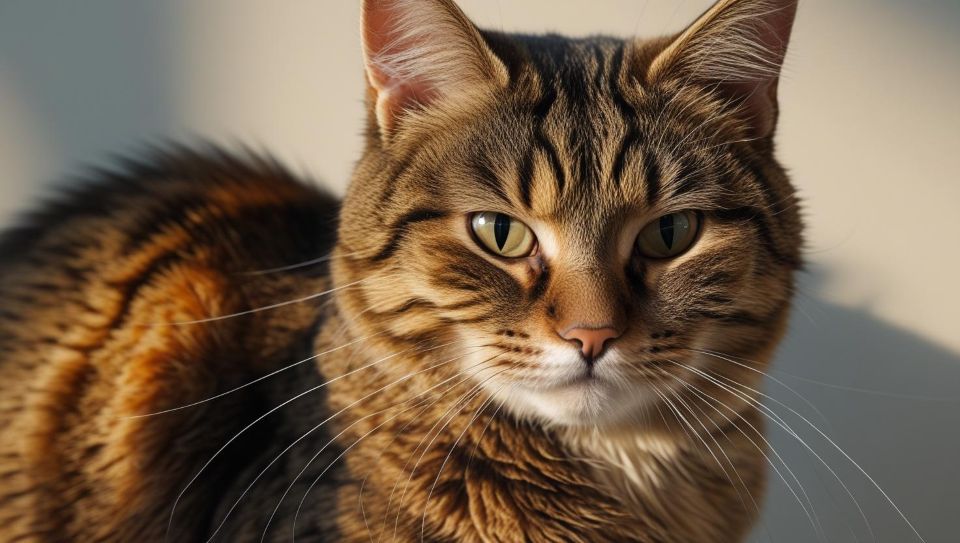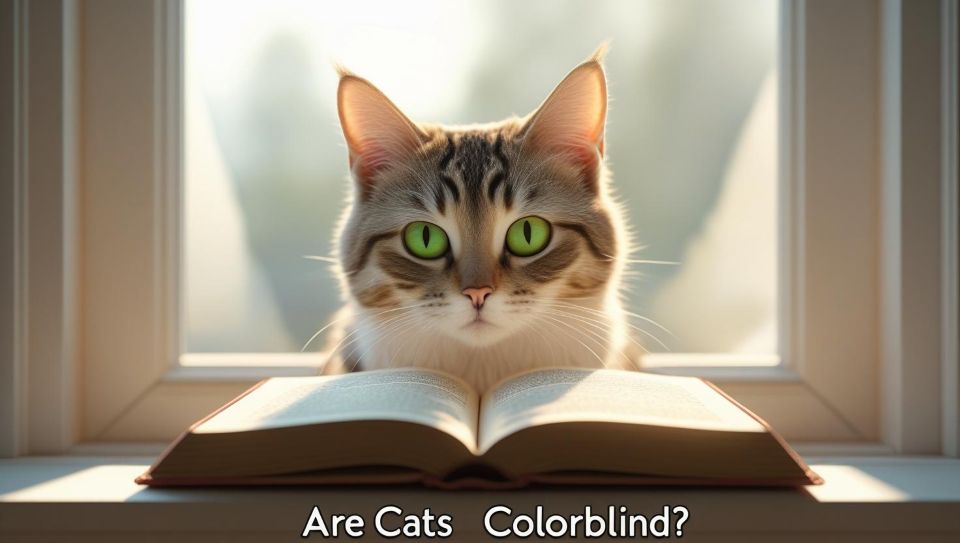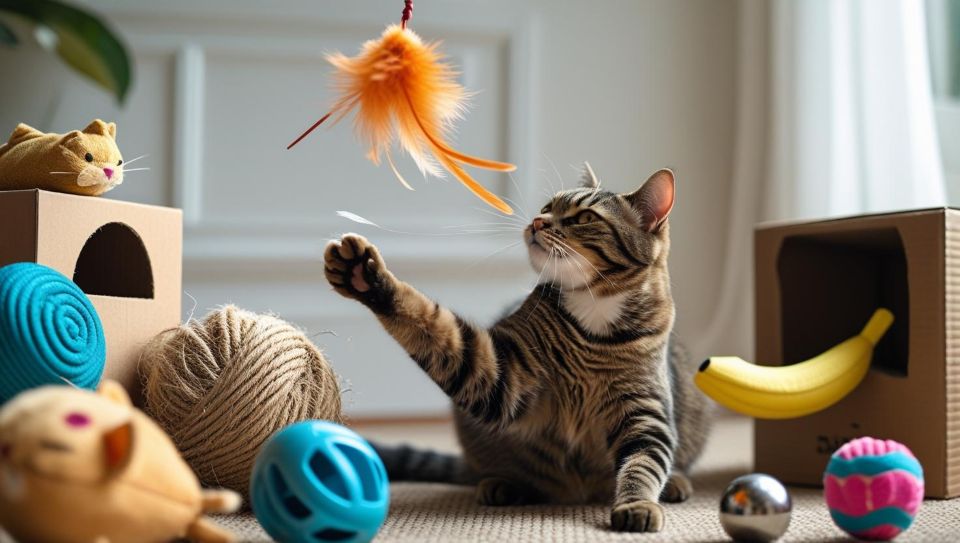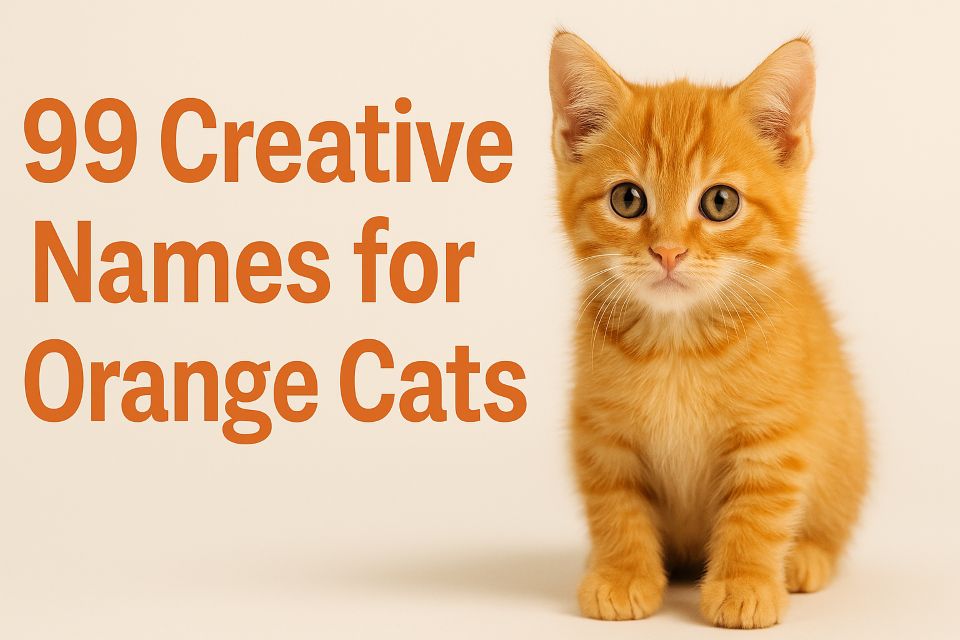If you’ve ever seen your cat chase a red laser pointer or walk right past a neon pink toy to sit in a plain cardboard box, you might have paused and thought: Can cats even see colors? It’s a common myth that cats live in a black-and-white world—but the reality is way more interesting. Let’s explore what science says about how cats see colors, and why their vision is built differently from ours.
It’s Not All Black and White: Cats Can See Some Colors
Here’s the deal—cats are not completely colorblind. While they don’t see the world as vividly as we do, research suggests they have dichromatic vision, meaning they can detect certain colors, just not the full spectrum.
Humans have three types of cone cells in our eyes, which help us perceive a wide range of hues—from deep reds to bright blues. Cats, on the other hand, only have two types of cones. This means colors like red, orange, and pink might look more like muted yellows or even gray to them.
So, what colors can cats see? They’re most sensitive to blues and greens. A turquoise feather toy or a green ball will likely catch their eye more than anything in the red family. Their color range is limited, but it’s definitely not non-existent.
Built to Hunt: Why Cats Prioritize Movement Over Color
Cats didn’t evolve to admire colorful sunsets—they evolved to hunt. Their eyes are fine-tuned for tracking motion in low light, especially during dawn and dusk, when many small prey animals are active.
How do they do this? Cats have a high number of rod cells, which are better at detecting movement and light than color. So while they can’t appreciate the full rainbow, they’re excellent at spotting even the slightest rustle in the grass.
They also have a wider field of vision than humans—around 200 degrees, compared to our 180. Plus, their peripheral vision is sharper, helping them notice motion off to the side, like a toy suddenly sliding across the floor. However, their visual acuity (how clearly they see details) is lower. What we see clearly at 100 feet, they might need to be within 20 feet to perceive clearly. It’s a trade-off that favors motion over detail.

Color Isn’t Everything for Cats—But Contrast and Texture Matter
In a cat’s world, color is often secondary to movement, texture, and sound. That’s why a crinkly brown paper bag can be more exciting than a bright purple mouse. The appeal lies in how it feels and sounds—not how it looks.
When navigating their environment, cats rely heavily on contrast. A dark couch against a white wall or a food bowl placed on a light-colored mat helps them distinguish objects more clearly. If you’ve ever noticed your cat hesitating in a cluttered area, it might be because the lack of visual contrast is making things hard to distinguish.
So if you’re setting up your cat’s feeding area, try placing bowls where they stand out—clear contrast helps with spatial awareness.
Are Cats Technically Colorblind?
Not exactly. The idea that cats are fully colorblind (seeing only in black, white, and gray) is a misconception. They have dichromatic color vision, similar to humans with red-green color blindness. Think of it like turning down the color saturation on your TV—not completely devoid of color, but definitely more muted.
What This Means for Cat Toys and Accessories
When choosing toys or accessories for your feline friend, don’t obsess over whether it’s red, orange, or pink. Instead, focus on features that cats actually respond to:
- Erratic movement (mimics prey)
- Interesting textures (like feathers or crinkle material)
- Interactive sounds (bells, rustling)
- Colors they see best—blue and green are safer bets
So if your cat ignores that pricey red feather wand, don’t take it personally—they might just prefer chasing shadows or finding a sunny spot for a nap.
Final Thoughts
Cats do see colors, just not like we do. Their vision is adapted for low-light hunting and motion detection, not for appreciating vivid hues. While their color palette is limited, their eyes are incredible tools for their specific needs. So the next time you shop for a cat toy, remember—it’s not about how it looks to you, but how it moves, sounds, and feels to them.





